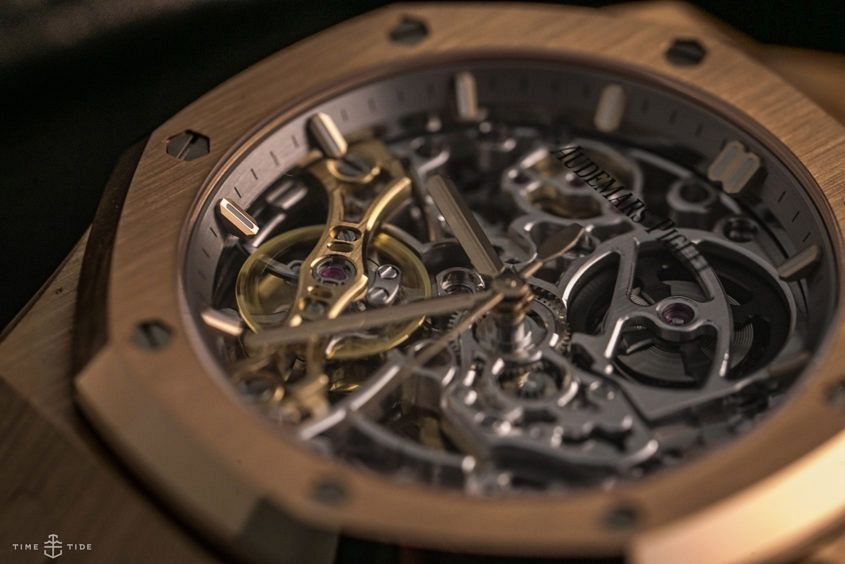Looking through Audemars Piguet’s Royal Oak Double Balance Wheel Openworked
Nick KenyonEditor’s note: Make no bones about it, skeleton watches are not to everyone’s taste. Legibility is sometimes less clear than a watch with a solid dial, but this is because time telling is almost ancillary to the stunning exposé that the watch offers. A skeleton dial offers a view typically reserved for a watchmaker in search of a problem, with any warmth offered by the layperson’s intrigue, evaporated under the cool white lights of a workbench. So let’s take another look at one of the best-looking skeleton dials out there.
One of the finest open-worked watches on the market right now (and one that, paradoxically, didn’t make our list of skeletonised watches) is the Royal Oak Double Balance Wheel Openworked from Audemars Piguet. Visually, this pink gold case, with predominantly steel movement architecture, is everything you’d expect — that classic RO case and bracelet looking boss, with a deep, complex open-worked dial. And while legibility is the main concern here (there’s not a heap of contrast between the movement and those gold hands, compared to earlier versions with a grey movement finish), it quickly becomes apparent that the titular double balance, nestled at eight o’clock is the star of the show. What, I hear you ask, precisely is a double balance? Well, the role of a balance is to regulate the accuracy of the watch. This watch offers not one, but two balance wheels — which is good, as more mass equals more accuracy. What’s more, the balance wheels are set against each other to hopefully offset any variance in its twin.
The case measures in at 37mm across, making it a solid, and solidly opulent, choice for more slender wrists. But regardless of whether it’s worn by a king or a queen, this Royal Oak still holds the crown.







